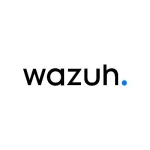I work for a security operation center. We use Microsoft Sentinel to monitor the tenants of our customers and provide automated investigations and feedback and alerting.
If something happens or if we get an alert, we also use it to investigate further. We do a deep analysis of the logs that we ingest from our customers. We also have many automation rules built into Microsoft Sentinel to reduce the noise and not-true positive alerts.
There is the ease of setup and ease of use. When we get new customers, we do not need to go onsite, build a system inside their on-premise network, and spend a lot of time setting up the systems. We can easily deploy a new Sentinel solution for a customer with automated templates, which benefits a lot in onboarding new customers. Because we have integrated it with many other security solutions from Microsoft, we can also perform many actions for which we otherwise would have needed VPN access or would have had to go to the customer site. So, the main benefit is that we can easily do anything from anywhere without having to spend much time setting up and onboarding.
We have combined it with other tools such as Microsoft 365 Defender Suite. With all tools combined and the customization that we have developed, we get pretty good insights into possible threats. It all depends on the logs you ingest. If you ingest the right logs, you can get very meaningful insights.
It helps us to prioritize threats across the enterprise. It does that in a very good way. It prioritizes the threats based on multiple factors. If multiple similar incidents happen or suspicious related activities happen at the same time, the incident gets a high priority because that's likely to be a real threat, but it also ingests the priorities that come from the other tools. You also have the ability to adapt priorities because each customer is different. Each business is different. We give our customers a standby for tickets that come in with priority two or higher. Microsoft Sentinel also gives us the chance to lower priority on some cases or upper the priority on some cases depending on the business use case of the customer.
We are a Microsoft security company, so we try to use as many Microsoft security tools as possible. We have Microsoft Defender for Cloud and Microsoft Defender for Office 365 as well. They are integrated into Defender 365 currently. We use the compliance portal. We use Microsoft Purview. We use Microsoft Sentinel. We use Microsoft Defender for Key Vault. We try to use as many security solutions as possible.
We have integrated these products with each other, and we have succeeded in it as well. Each product is at least integrated with Microsoft Sentinel by either using the way provided by Microsoft or a custom way to ingest data. We have integrated Defender 365 and other tools as well. We try to ingest alerts only from one place, if possible. We have integrated everything into one portal, and we ingest the data only from that portal. The integration for Microsoft solutions mostly works natively, but some of our customers have third-party solutions that we can integrate as well.
It's very important that Microsoft solutions work natively. When they work natively, you can have more built-in functionality for them. They are much more maintainable, and it does not take as much time to set up versus when you have to make a custom integration to something.
Microsoft Sentinel enables us to ingest data from the entire ecosystem. We can make custom integrations. If you have Linux machines or on-premises networks, you can set up a log forwarder inside the network and ingest the data that way into Microsoft Sentinel. There are many possibilities to ingest data from all locations, which is necessary for an XDR/SIEM solution. This ingestion of data is one of the most important things for our security operations because if we cannot ingest any data, we are partially blind on that side.
Microsoft Sentinel enables us to investigate threats and respond holistically from one place. You do have to learn the KQL language, but it's similar to many other languages that are created by Microsoft or adopted by Microsoft. It's not that hard to learn. If you know it well, you can easily perform analysis on a whole bunch of data, whereas without Microsoft Sentinel, you would have to perform the analysis at many different places. Microsoft Sentinel gives you the possibility to do it just in one place.
We do not use all the functionalities of Microsoft Sentinel. For example, hunting queries are something that we do not use often, but their threat intelligence is updated quite regularly. We have tried it in Purview, which is a separate threat intelligence license that you can buy from Microsoft, but Microsoft also provides basic rules that alert on multiple threat indicators they detected earlier. They are very useful at the beginning sometimes. You have to remove those rules yourself as soon as they get outdated. The alerting that we get out of the threat intelligence provided by Microsoft itself has been valuable many times for our use cases.
Microsoft Sentinel helps automate routine tasks and the finding of high-value alerts. If we see many recurring alerts that are always suspicious but not really malicious, we can build our own automation rules that auto-close these alerts or automatically lower the priority on those alerts so that we are not getting too many notifications from alerts that are not worth investigating. It's really easy to do that. You can do it in many ways. To do the automation, there is a user-friendly interface. There are just drag-and-drop steps. It helps a lot, and it's easy to implement as well.
It has helped to eliminate having to look at multiple dashboards and have one dashboard for the analysis part, but for the response actions, it hasn't eliminated that because we have to log on to the Microsoft Defender security portals to perform most of those actions. For the analysis part, the alerting part, and the automated investigation part, this is the solution.
Its threat intelligence helps prepare us for potential threats before they hit and take proactive steps. For example, as soon as the Log4j vulnerability was known to the public, we immediately got alerts. We were able to take immediate action and remediate the vulnerability. We immediately knew how to prioritize our customers because we knew which customers already had active exploitation. Most of the time, such attempts were blocked, and if they got through, then the machine was luckily not really vulnerable, but it has been very helpful at that point to immediately assess the criticality for our customers. The attempts were not successful for many reasons. It also blocked them immediately.
It has saved us time. Especially because of the automated investigation part, it saved us a lot of time. We also have automated reporting, which also saves a lot of time each month. We provide our customers with a monthly report. If we had to do it manually and gather data from many different places, it would take a lot of time. Even if we had to fill it in manually in Microsoft Sentinel, it would take a lot of time, but because Microsoft Sentinel already ingests all of the data we use in our reports, we were able to write an integration with Microsoft Sentinel, which takes care of 75% of our reporting, and then we only have to do our analysis part. The data is already filled in, which saves a lot of time each month. The time savings went from one day per customer to one hour or two hours. For nearly fifteen customers, it was fifteen days, and now, it's 30 hours, which is more or less four days. It saves a lot of time each month that can now be spent on improving our service or performing deeper investigations on newly known threats and proactively act on them.
It hasn't reduced our time to detect because we have been using Microsoft Sentinel from the beginning. So, we always had the same response time because we only used Microsoft Sentinel for our alerting. It integrates well with Atlassian tools and ServiceNow tools, which gives us the ability to be alerted very fast on something, and then we can act immediately.
It's easy to use. It's a very good product. It can easily ingest data from anywhere. It has an easily understandable language to perform actions. You can use the entire Azure cloud to perform automated actions and automate investigations. The possibilities are more or less limitless because you can integrate Microsoft Sentinel with many resources inside the Azure cloud. If you integrate the security tooling with it, you can also make use of the data that Microsoft gathers from all Windows operating systems about malware, for instance, or about possible attacks. They ingest that data from so many sources, and you can make use of it. It helps a lot in discovering new vulnerabilities. We can almost immediately investigate them because Microsoft is always on top of things.
Threat intelligence could be better because we have had some cases where we got alerted online for many things all of a sudden. It was because some updates happened in the background, and we didn't agree with the use cases or how they were built. That part of threat intelligence could be a little better.
We have also had incidents where other tooling got an update but Microsoft Sentinel didn't update.
Microsoft Sentinel is a simple and straightforward solution. It could have a better API to be able to automate many things more extensively and get more extensive data and more expensive deployment possibilities. It can gain some points on the automation part and the integration part. The API is very limited, and I would like to see it extended a bit more.
We have recently turned on the bi-directional sync capabilities of Microsoft Defender for Cloud. It works pretty well, but sometimes, it just syncs only the incidents and not the alerts behind them or the other way around. That was the only thing. That was a recent complaint we had. Other than that, it works well.
I've been using Microsoft Sentinel for nearly two years.
It's very stable. We have many different Microsoft Sentinel instances running. Apart from some cleanup and maintenance, they all are running without any issues.
It's very scalable. As long as you send the right logs, it can ingest them perfectly, but, of course, the more logs you ingest, the higher the price, so you have to be very careful and very concerned about the logs you are ingesting in Microsoft Sentinel. You have to make sure that the logs that you ingest provide value for your security and are not useless.
I have not contacted them regarding Microsoft Sentinel, but I have contacted them for other solutions. Sometimes, we can't figure something out ourselves or we have questions about the new features that are made public. If we have a question or need assistance in any way in providing support to our customers, we can count on support to help us. I have not had a bad experience with them. We are also a Microsoft partner, so we get quick replies and have direct contacts within Microsoft sometimes for some cases. If we need support, they always help us very well.
Overall, I would rate them a seven out of ten because sometimes, they take a long time or you get redirected many times to another colleague before the issue is resolved, but in the end, they always help us out, and everything is fixed.
In my previous job, we worked with local or on-premise systems, but the security monitoring was not that strong at that time. This is my second job, and in this job, I've only worked with Microsoft Sentinel.
I worked on one of the deployment scripts we use for our customers, but I was not involved in its initial deployment. I deployed it once for a customer by using the Azure resource manager template that I built. It was rather complex because the documentation was not up to date or correct at that time. When working with Microsoft Sentinel, sometimes the documentation is not as up-to-date or complete as it should be in my opinion.
The number of people involved in its deployment depends on the size of the customer, but usually, one or two people from the team do the deployment. One person works on the deployment of Microsoft Sentinel, and the other one usually works on the deployment of other components, such as analytics, automation, etc.
It does require maintenance. In order to stay up to date and keep evolving on the threat landscape, you have to keep looking for new analytic rules, new investigation techniques, and new automations. You have to constantly improve your Sentinel in order to stay on point and detect and have complete detection scenarios. Sometimes, the rules that are provided by Microsoft or the settings or conditions that are provided by Microsoft get deprecated or get a new update. You have to follow that up as well in order to stay up to date with the things Microsoft changes or recommends.
If you want to use Microsoft Sentinel, you should start thinking about the logs that you want to ingest. You should identify the ones that are important and also think of the use cases and what you want to detect from those logs. If you make the right choices on these two things, the setup and the integration with other tools will be very easy because you know from where you want to ingest logs and you know how to create analytics rules, automation rules, and things like that to detect the things that are critical or important to the security of your business.
To a security colleague who says it’s better to go with a best-of-breed strategy rather than a single vendor’s security suite, I would say that with a single vendor, we can integrate everything like a single product. We use Azure Active Directory, so we can easily secure authentication across multiple products and manage access permissions. On top of that, we have a single pane of glass where we can investigate and perform analysis in a very easy and user-friendly way, which saves a lot of time. We don't have to click through many different portals and know where to look each time. We don't have to learn the configuration, the setup, and the actions we can perform in each system because everything has the same interface. We only have to learn the things that Microsoft provides and not different products. The single pane of glass saves time and makes it much easier to investigate and respond and secure the environment.
Overall, I would rate Microsoft Sentinel an eight out of ten. I'm very happy with it, but no product is perfect. It can improve on some points, but overall, it's very good.















